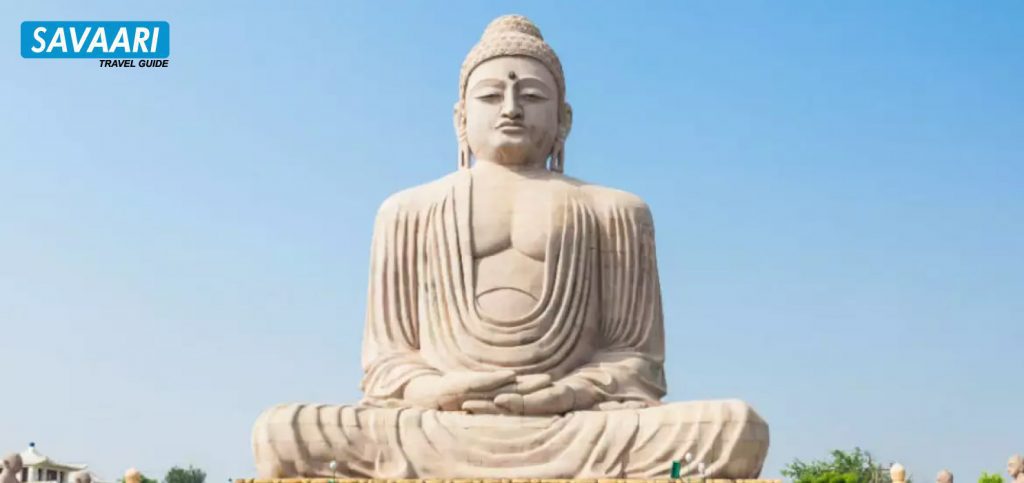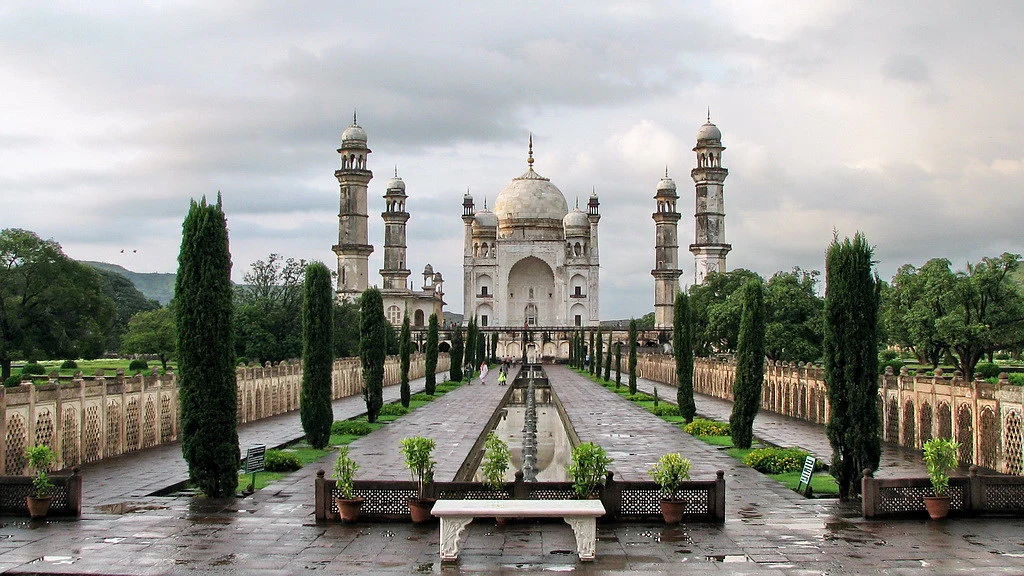The Amarnath Cave Temple stands as a revered Hindu shrine, drawing countless pilgrims annually to its sacred grounds. Nestled amidst the Himalayas, it holds profound significance as one of the holiest Lord Shiva shrines in Hindu mythology. The cave’s unique feature lies in the naturally formed Shivling, created by the continuous melting of ice from the cave’s ceiling onto the floor, symbolizing Lord Shiva’s presence. Pilgrims from all corners of the globe embark on the arduous journey of the Amarnath Yatra, organized by the Shri Amarnath Ji Shrine Board, to seek the divine blessings of Lord Shiva.
This spiritual expedition traverses rugged terrains and breathtaking landscapes, fostering deep spiritual connections and devout reverence among devotees as they undertake this sacred pilgrimage. For a comfortable yatra, you can book a taxi service in Pahalgam with Savaari Car Rentals to reach the base camp safely.
Table of Contents
- About Amarnath Cave Temple
- Things to do in Amarnath Temple
- Amarnath Cave Temple darshan timings
- Amarnath Cave Temple dress code
- Sevas and poojas in Amarnath Temple
- Entry fees and pooja charges in Khatu Shyamji Temple
- Amarnath Temple festivals
- Other attractions near Amarnath Temple
- How to plan a trip to the Amarnath Temple
- Hotels and resorts near Amarnath Cave Temple
- Nearby road trips to take from Amarnath Temple
- Useful links
About Amarnath Cave Temple
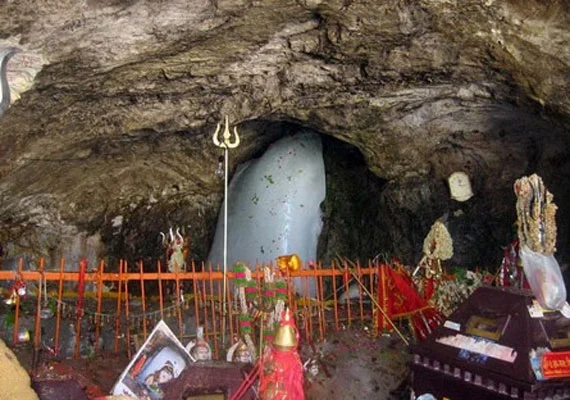
The name of Amarnath temple comes from two words. The first is Amar, which translates to immortal, and the second is Nath, which means Lord. It is believed that this holy cave was the very place where Lord Shiva told his bride, Goddess Parvati, the truth about life and death.
Deity of Amarnath Cave temple
The shrine at Amarnath Cave Temple is a Swayambhu lingam of Lord Shiva. Lingam means a physical part, and it is a stalagmite formation inside the cave, which is created as water droplets fall from the roof to the floor of the cave and freeze into ice. The cave itself is about 130 ft tall and is at an elevation of 12,756 ft above sea level (3,888 meters). The frozen droplets collect one over the other leading to the formation of an upward growth in the shape of a solid dome. What is impressive is that there isn’t just one lingam; in fact, there are two more. The two smaller shrines represent Parvati and Ganesha.
Where is Amarnath temple located?
Nestled amidst the snow-capped peaks of the Himalayas, the Amarnath Cave Temple finds its abode in the northern Indian state of Jammu and Kashmir. Situated at an elevation of approximately 3,888 meters above sea level, the temple is ensconced within the majestic Lidder Valley near Pahalgam, which is accessible through a rigorous pilgrimage known as the Amarnath Yatra. The temple attracts devotees from far and wide seeking the divine blessings of Lord Shiva. The journey to this sacred site unfolds amidst breathtaking vistas of rugged mountains, lush green valleys, and gushing rivers, offering pilgrims not only a spiritual experience but also inches them closer to nature’s magnificence and beauty.
History of Amarnath temple
According to folklore, the discovery of the Amarnath Cave is ascribed to Buta Malik, a shepherd. Legend has it that he encountered a saint who bestowed upon him a bag filled with coal, which miraculously transformed into gold coins upon opening at his home. Grateful, Buta Malik returned to the site to express his thanks, only to find a shrine erected where he had met the saint.
Intriguingly, references to the Amarnath Temple, also known as Amareshwar, can be traced back to the ancient text “Rajatarangini.” Legend has that Queen Suryamathi made significant contributions to the temple in the 11th century AD, including the donation of Trishul, banalingas, and sacred artifacts. However, by the 15th century when Buta Malik rediscovered the cave, the memory of Queen Suryamathi’s deeds had faded into obscurity. Despite this, the Amarnath Cave continues to remain a sacred pilgrimage site, drawing devotees from far and wide to seek the blessings of Lord Shiva.
Best time to visit Amarnath Cave Temple
The Amarnath Yatra takes place annually during a designated period, which is announced each year. Typically, it begins on the auspicious day of Skandshasthi in July, according to the Hindu calendar, and concludes on Shravan Purnima (Raksha Bandhan) in August.
The optimal time to undertake the Amarnath Yatra is from June to August when the weather is relatively mild and the pilgrimage route is fully accessible. For the year 2024, the Yatra will commence on July 1st and end on August 19th.
Interesting Facts about Amarnath Cave Temple
Devotees undertake a multi-day trek up the mountain to visit the Amarnath temple in June, aiming to witness the snow-formed Shivling inside the cave. Here are some intriguing facts about the Amarnath mandir:
- The temple holds great significance as one of the 51 Shakti Peethas, a sacred site where devotees seek Lord Shiva’s forgiveness for their sins.
- It is believed that Shiva revealed the secret of his immortality to Goddess Parvati at this location.
- There are claims of seeing a pair of pigeons inside the cave, enduring the harsh conditions. These pigeons are thought to be immortal, having heard the tale of immortality from Lord Shiva.
- Places such as Pahalgam, Chandanbadi, Sheshnag, Mahagunas, and Panjtarni are special because Lord Shiva stopped at these locations on his journey to Amarnath.
- The route to the cave includes passing through Pissu Top, a site believed to be littered with the bodies of demons who fought and were defeated by Lord Shiva.
- Lake Sheshnag, with its cold, azure waters, remains a notable feature along the pilgrimage path.
- It is said that the Shivalinga changes in size according to the moon’s phases, appearing more prominent in the summer.
- According to legend, the Amarnath mandir is over 5000 years old.
Things to do in Amarnath Cave Temple
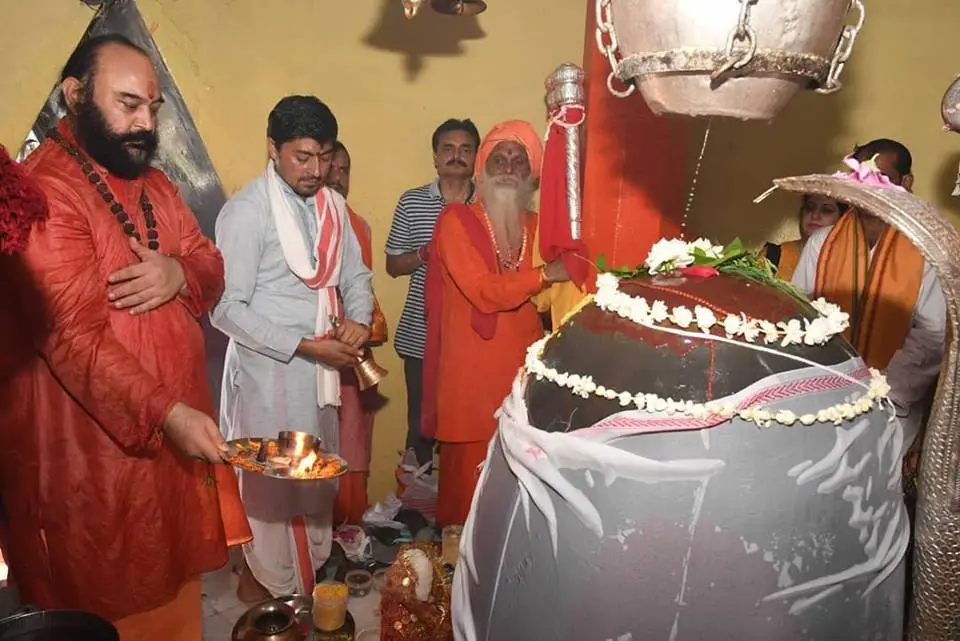
- Join the evening Aarti at the Amarnath Temple, where priests conduct prayers and perform rituals. Experiencing devotion and chanting can enhance your spiritual connection.
- Close to the Amarnath Cave lies the scenic Amarnath Lake. Pilgrims taking a holy dip in the freezing waters near the sacred Amarnath Cave believe the act can purify sins and lead to salvation. Despite the icy temperatures, the site’s spiritual significance and the pilgrims’ devotion make the experience profoundly meaningful.
- On your way to Amarnath, make a stop at Pahalgam to seek blessings at the ancient Shivling. This sacred site is spiritually significant and provides a tranquil setting for meditation and contemplation.
- The Snow Aarti at the Amarnath Cave, performed by temple priests amid the snowy surroundings outside the cave, offers a unique spiritual experience. Pilgrims gather to witness the holy offerings and chants, with the sounds of conch shells and bells creating a divine atmosphere despite the cold. The sight of the Aarti flame flickering in the icy wind symbolizes the enduring faith of the devotees.
Amarnath Cave Temple Darshan timings
Following are the Amarnath Yatra Timings
- From the Sheshnag camp, pilgrims can depart between 6:00 AM and 2:00 PM
- The Panjtarni camp has a departure window from 5:00 AM to 3:00 PM
- Darshan at the Holy Cave starts from 6:00 AM to 4:00 PM
Amarnath Cave Temple Dress Code
- Ensure to store your clothes and food items in a waterproof bag to prevent them from getting wet.
- Women participating in the Yatra should avoid wearing sarees while trekking. Instead, they should opt for a Salwar Kameez, pant-shirt, tracksuit, or any other clothing recommended for high-altitude trekking.
Sevas and poojas at Amarnath Temple
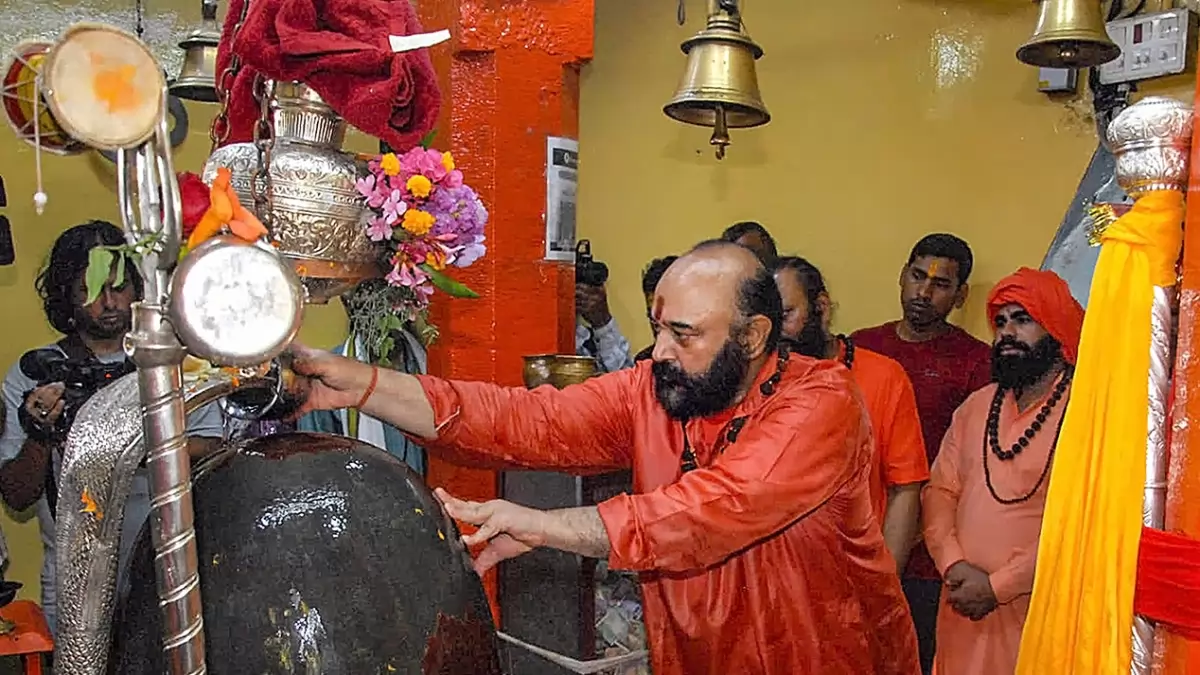
Source: Outlook
Certain rituals and pujas are mandatory at the Amarnath Temple. The first of these, called the Pratham Puja, which translates to ‘first puja’, occurs on the initial day the holy cave opens for the yatra. Members of the Shri Amarnath Shrine Board and the Jammu and Kashmir Government attend this puja without fail. The ceremony is marked by the chanting of various shlokas and mantras dedicated to Lord Shiva.
Several pujas are performed on the same day, including Bhoomi Puja, Navagraha Puja, Chhari Puja, and Dhwajarohan. After the rituals, prasad is distributed among the devotees present. Another significant ritual is Chhari Mubarak, which occurs on Shravan Purnima, celebrated as Raksha Bandhan. The Chhari is a sacred mace that once belonged to Lord Shiva and was given to Sage Bringesh by the deity. During this puja, the mace is displayed to the public for darshan.
Amarnath Cave Temple Entry Fees
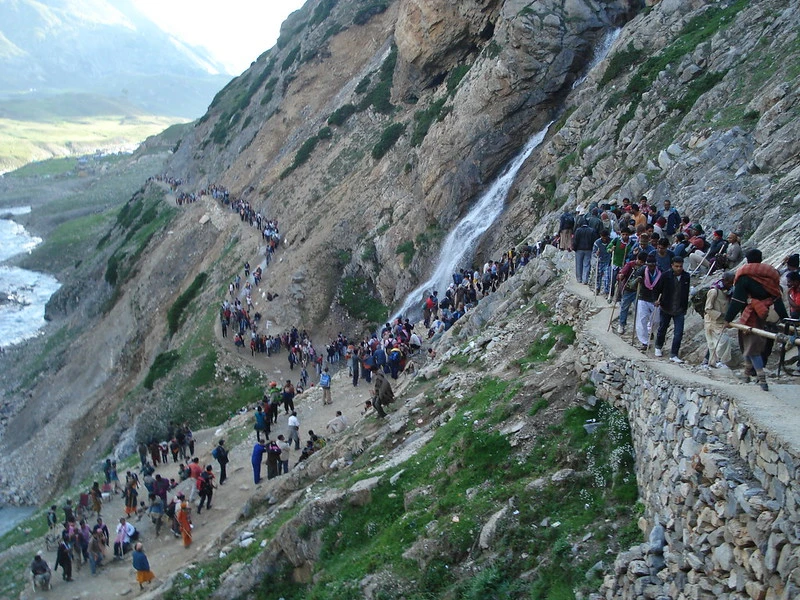
The Amarnath Yatra is set to open on June 29 for the year 2024, and it will remain open till August 19, 2024. The advance registrations began from April 15, and one can complete the registration process online by visiting the official website of Shri Amarnathji Shrine Board or by downloading the mobile application- “Shri Amarnathji Yatra”. The registration fee for the Amarnath Yatra 2024 is ₹150 per person. After registering, all participants must obtain a Radio Frequency Identification (RFID) card from designated centers in the Jammu and Kashmir division before beginning their journey. All pilgrims need to note that entry to the control gates at Domel or Chandanwadi is not permitted without a valid RFID card.
The SASB website provides a list of designated bank branches, authorized doctors, and medical institutions, along with the CHC format. Before registering, please ensure that you and your fellow travelers match the following criteria: 1) No pilgrim less than 13 years of age or more than 70 years of age, and no lady with more than six weeks pregnancy, shall be registered for the Yatra. 2) While registering, each Yatri needs to upload a clear scan and valid copy of a Compulsory Health Certificate (CHC) issued by an authorized doctor on or after 8th April 2024, along with a recent passport-size photograph.
Amarnath Cave Temple Festivals
Maha Shivratri, a significant festival dedicated to Lord Shiva, is celebrated during the summer months, making it an ideal time to visit the Amarnath Cave Temple. Devotees flock to the shrine during this auspicious festival to pay homage to Lord Shiva amidst the spiritual ambiance of the Amarnath Cave Temple.
Other attractions near Amarnath temple
Places to visit near Amarnath Cave Temple
Martand Sun Temple
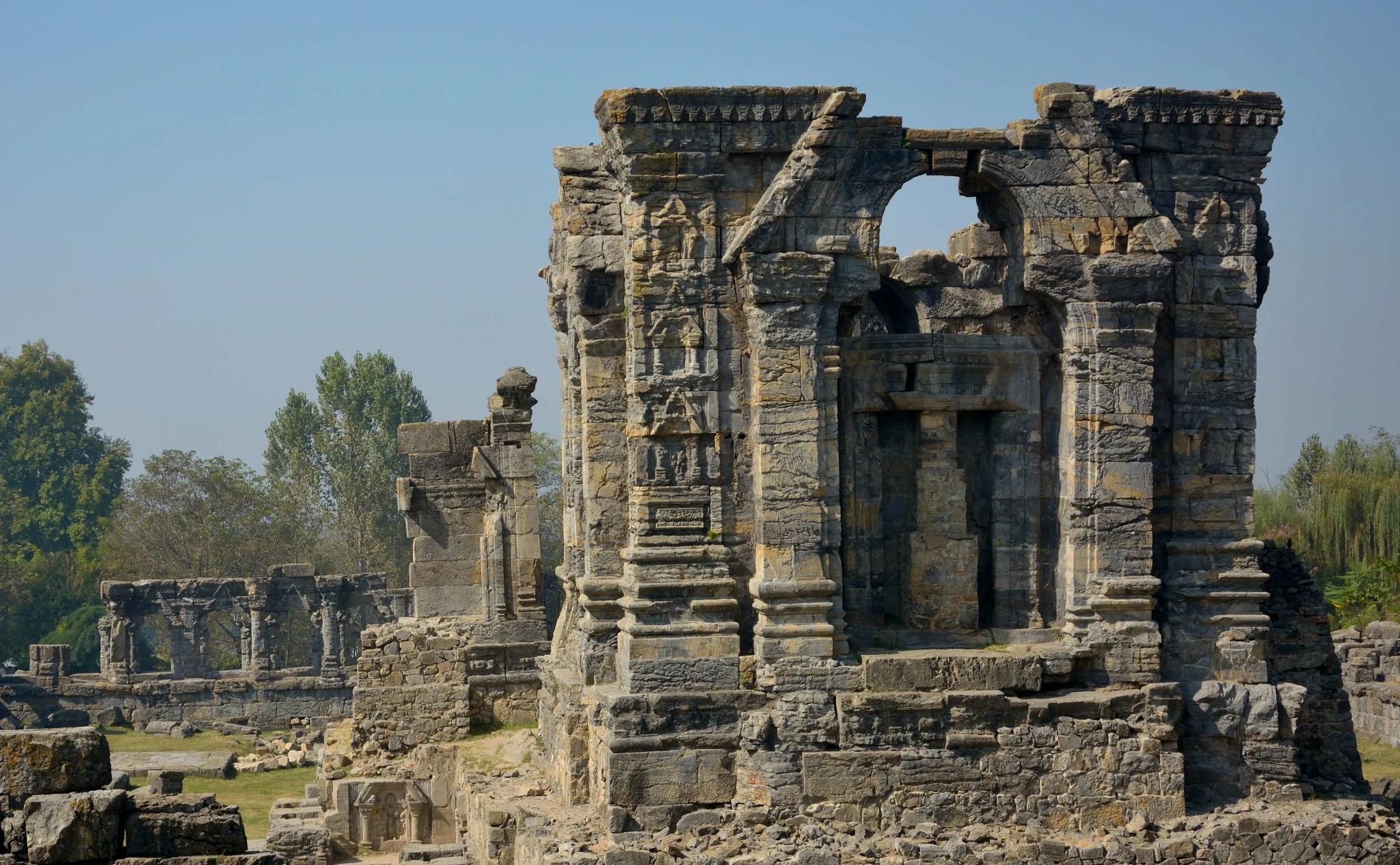
This 8th-century CE Hindu temple is a day trip from Pahalgam and is of extreme historic significance. The Martand Temple perched atop a plateau, offers a panoramic view of the entire Kashmir Valley. Based on the ruins and archaeological discoveries, it is evident that the temple was a remarkable example of Kashmiri architecture, seamlessly integrating elements of Gandharan, Gupta, and Chinese architectural styles.
- Entry Fee- NIL
Mamleshwar Temple
This historic stone structure dates back to the 4th century. It is located in the village of Mamal, just a ten-minute drive from Pahalgam town across the Lidder River. The temple features a serene pool with an ancient pedestal and a Shivling set against the backdrop of the majestic Himalayas. Its rich history and picturesque location make it a noteworthy site to visit.
Chandanwari
It is the starting point of the revered Amarnath Yatra, holds significant religious importance. Renowned for its stunning natural beauty, it offers visitors a picturesque landscape to explore. This site also provides numerous opportunities for tourists to enjoy and appreciate the serene environment.
Tulian Lake
Situated between the Pir Panjal and Zanskar ranges, Tulian Lake in Pahalgam is a popular tourist spot. Known for its striking blue waters, the lake is accessible via a scenic two-day hike.
Sheshnag Lake
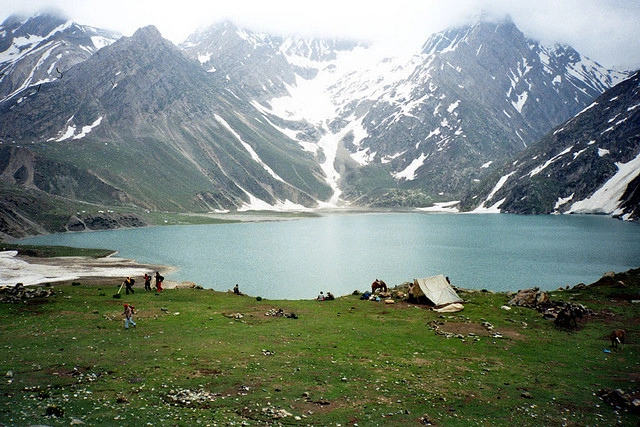
It is a key point on the traditional trekking route to Amarnath from Pahalgam. It is surrounded by snow-capped mountains and holds mythological significance, as it is believed to have been created by the serpent king, Sheshnag. Camping by its emerald green waters offers a perfect spot for Amarnath pilgrims to rest and rejuvenate.
Pissu Top
It is located on the route to the Amarnath Cave in Jammu and Kashmir’s Anantnag district and is a notable hilltop offering stunning views of the surrounding mountains and valleys. Steeped in history and mythology, it is believed to have been named after a battle between gods and demons, where the defeated demons’ bodies formed the hill. This spot serves as a common rest point for pilgrims on the Amarnath Yatra, an annual pilgrimage dedicated to Lord Shiva. Though the climb to Pissu Top is challenging, the breathtaking panoramic views make it a rewarding destination for photographers and nature enthusiasts.
Places to eat in Amarnath Cave Temple
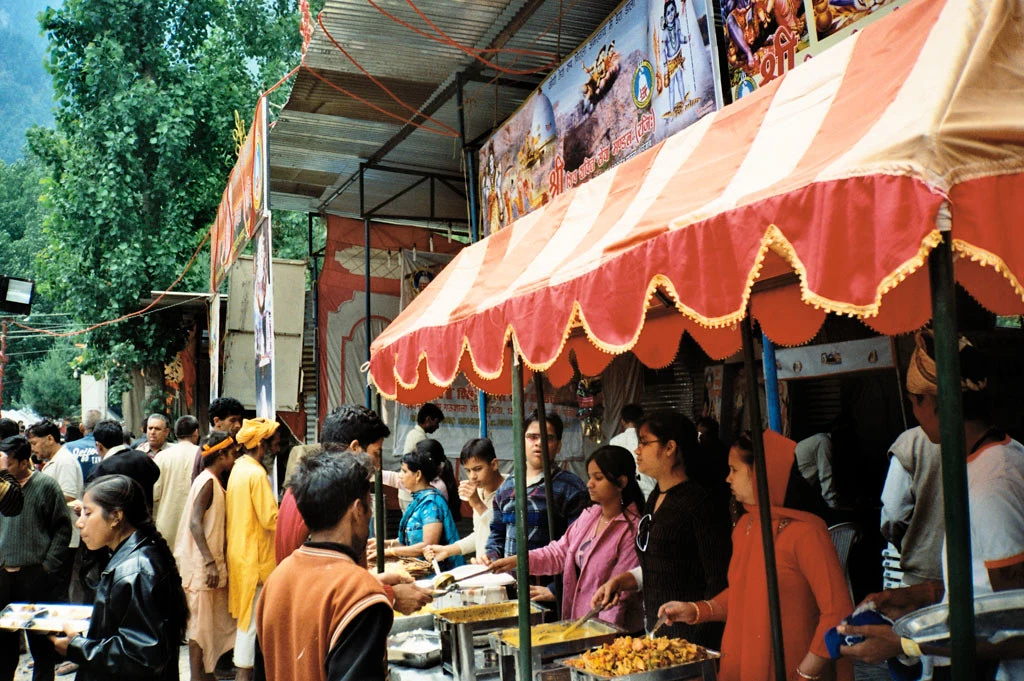
Various NGOs and societies provide free food, water, and refreshments to the pilgrims on their journey to the Holy Cave. Langars are offered at multiple locations throughout the Yatra period. Additionally, these are some famous restaurants near Amarnath Cave Temple:
- Shree Ganesh Vaishno Dhaba, Pahalgam: This small eatery on Chandanwari Road is famous for Chaman Paneer, a must-try dish made of a thick tomato sauce with spices and a generous amount of cottage cheese.
- Mettu Pahalgam Delight, Pahalgam: This vegetarian restaurant serves Kashmiri comfort food and is famous for its Ladakhi Pulao, a perfect pairing for the vegetarian main course. It’s a mild pulao comprising dried fruits and nuts, giving it a mild fragrance and unique taste.
- Sheshnag Lake View Restaurant: Another haven for vegetarians, this restaurant located near Sheshnag Lake is famous for Kashmiri Saag, a mild yet flavourful dish made with leafy greens handpicked for a subtle, comforting, nutritious taste.
- Prem Vaishno Dhaba: This restaurant, located close to the helipad, is a frequent place for hungry pilgrims before and after darshan. Gobhi Aloo is one of the popular dishes at Vaishno Dhaba, and you must try it.
- Krishna Vaishno Dhaba: Apart from other regular dishes, the Rajma Daal is famous at this Dhaba and is a popular choice for tourists. This dish is often paired with simple plain rice or hot parathas.
Additionally, there are tea stalls and small eateries along the route. It’s recommended to carry snacks for sustenance and an extra energy boost. Suitable options include canned food, dark chocolate, roasted chana, glucose biscuits, and dry fruits.
How to Plan a trip to Amarnath Cave Temple
Planning a pilgrimage to the Amarnath Cave Temple involves several key steps. Begin by checking the designated pilgrimage dates and registration procedures, as access to the temple is open for a specific period each year. Arrange accommodation in nearby towns such as Pahalgam or Sonamarg, considering factors like availability and proximity to the starting point of the trek. Pack essential items for the journey, including warm clothing, sturdy footwear, and any necessary medications. Familiarize yourself with the trekking route and ensure you have obtained any required permits or passes. Stay informed about weather conditions and travel advisories to ensure a safe and fulfilling pilgrimage experience to the revered Amarnath Cave Temple.
How to reach Amarnath Cave Temple
By Train
Amarnath does not have direct train connectivity. The closest railway station is in Jammu, approximately 178 kilometers away. Travelers can then opt for a dependable Savaari cab service from Jammu to reach either Baltal or Pahalgam. From Baltal, pilgrims embark on a challenging 1-2 day trek spanning 15 kilometers to reach the revered Amarnath Cave Temple to seek blessings and spiritual solace.
By Road
Due to its rugged terrain, Amarnath is not easily accessible by road. The Yatra typically commences from either Baltal or Pahalgam, both serving as base camps for pilgrims. Travelers can reach these locations by hiring Savaari cab services from nearby airports or railway stations. You can travel from Jammu to Pahalgam by booking our Savaari cab, enjoying the flexibility of accommodating your specific requirements and preferences. We also ensure a comfortable and convenient journey to the starting points of the pilgrimage. Whether you’re embarking on the spiritual odyssey from Baltal or Pahalgam, our reliable cab services aim to facilitate a seamless travel experience for pilgrims undertaking the sacred Amarnath Yatra.
By Bus
While government-operated bus services offer a budget-friendly choice, many prefer the convenience and comfort of hiring a cab to reach Baltal, as the roads are winding and narrow. You can book a Savaari car rental in Pahalgam for a safe journey to reach the camping grounds for the pilgrims.
By Flight
Situated around 70 kilometers away from Pahalgam, the Srinagar International Airport (SXR) serves as a major hub for various airlines. Travelers embarking on the pilgrimage to Amarnath from Pahalgam have several transportation options available. The most reliable and convenient option is to book a Savaari Cab from the Srinagar airport to your hotel near base camp and start your trek the next day.
By Helicopter Service
For some people, it might be physically challenging or time-consuming to trek from the base camp to the Amarnath Cave Temple. To address that, for those seeking a faster and more scenic route, prominent helicopter services like Hans operate between Baltal, near Pahalgam, and the Amarnath Cave Temple. These helicopter services provide pilgrims with an alternative mode of transportation to trekking, enabling them to experience breathtaking aerial views while traversing the picturesque landscapes of the Himalayas on their sacred pilgrimage.
However, to reach the starting point of your helicopter service, you can easily book a Savaari cab. The helipads for the rides are at Neelgrath that take you to Panjtarni. Tourists can also opt for a return ticket for the service, easing their journey to reaching the cave and back.
Hotels and Resorts near Amarnath Cave Temple
There are plenty of options for hotels and resorts of all budgets and requirements right up to where the trek for Amarnath Cave Temple begins. However, only temporary accommodations are available once you ascend on the trek. The following are a few options for planning a stay before or after the trek.
| Hotel | Address and Contact |
| Welcomhotel By ITC Hotels | Aru, Road, near Amusement Park, Pahalgam- 192126 PH: 01936 243 211 |
| Chinar Palace | Near 1st Bridge, Chandanwari Rd, Pahalgam- 192126 PH:060060 79979 |
| Hotel Heevan | Opposite Amusement Park, Pahalgam- 192401 PH: 0194 250 1395 |
| Radisson Golf Resort | Adjoining Golf Course, KP Rd, Pahalgam- 192126 PH:01936 243 444 |
| Hotel Golden Meadows | Thajwas Glacier Road, Forest Block, Sonmarg – 191203 |
Highest road trips taken from Amarnath Cave Temple
While Amarnath Cave Temple is a spiritual high of its own, Kashmir is a land blessed with scenic landscapes and captivating views. Here are some beautiful road trips you can take once you are back to base from the Amarnath Yatra. The distances mentioned are from Baltal Base Camp.
| Location from Baltal | Time | Distance |
| Baltal to Gulmarg | 3 hr 42 mins | 138.2 km |
| Baltal to Sonmarg | 30 mins | 13.8 km |
| Baltal to Srinagar | 2 hr 41 mins | 92.6 km |
| Baltal to Doodhpathri | 3 hr 38 mins | 122.1 km |
| Baltal to Yousmarg | 4 hr 25 mins | 153.4 km |
Download the Savaari taxi booking app to enjoy the best cab deals in Pahalgam, Sonmarg, and other places of interest near Amarnath Temple.
Useful Links
Online helicopter service booking begins for Amarnath Yatra
500 CAPF units to ensure a smooth Amarnath Yatra
Last Updated on July 22, 2024 by blogadmin




